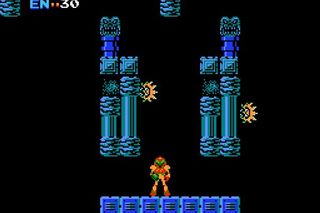The History of Metroid
A series that lived in the shadows of giants
Oct 23, 2007
The Metroid series has always been a victim of bad timing. It's one of the most critically acclaimed franchises in gaming. But thanks to dodgy release dates, internal politics and Nintendo's own disbelief in the franchise that's never quite rivalled the mighty Mario and Zelda series. Wrong place, wrong time?
1986; Atari was old news and the NES had successfully prevented the industry from spiralling into an imploding crash. 33-year-old Shigeru Miyamoto's hot-selling Super Mario Bros. and Donkey Kong franchises had proved that gaming wasn't just an arcade fad and Nintendo had risen to a position of industry domination.
Secretly, Miyamoto and EAD's overnight success had caused some internal competition at Nintendo, and former company superstar Gunpei Yokoi and his R&D1 team had had its feathers well and truly ruffled.
In recent years the former flagship team had been responsible for a string of one hit wonders including Duck Hunt, Excitebike and Ice Climbers, yet they had nothing to rival Miyamoto's mammoth franchises. With EAD producing hit after hit on the NES, Yokoi and his team had been tasked with handling game duties on the new Famicom Disk System - and this time Yokoi wanted his next game to match the success of Miyamoto's team.

Yokoi banded a team of four to create R&D1's new franchise. Kid Icarus man Yoshio Sakamoto in the director's chair, Hiroji Kiyotake handling the art design of Samus Aran and her gritty enemies and Makoto Kanoh creating the scenarios and concept for Metroid's dark and foreboding universe. Yokoi handled the project in a producer role.
Sign up to the GamesRadar+ Newsletter
Weekly digests, tales from the communities you love, and more
The guiding philosophy was to not follow in Miyamoto's lead. Yokoi's team decided that it would come up with something completely different from what the father of Mario would usually create. The result was a game entirely disconnected from the colorful, family-friendly universe of Mario; a gritty, moody sci-fi adventure with something EAD's titles lacked; atmosphere.
Famously, the team took plenty of inspiration from Ridley Scott's Alien, even naming Metroid's dragon-like henchman after the director. Coincidently the follow-up Aliens arrived in cinemas that Summer.
Yokoi and his team decided to create a believable world filled with disgusting creatures, tension and bleak environments to explore, all while upgrading the player's abilities to encourage them further into the dark alien planet.
Miyamoto's Zelda is often credited as the original non-linear adventure game but Metroid was in fact developed at the exact same time. Non-linear design was near unheard of at the time, and the R&D1 wanted to set Metroid apart from Nintendo's other games.
Perhaps its most distinguishing design choice came about half way through development, when one staff member joked, "wouldn't it be kind of cool if it turned out that the person inside the suit was a woman?" And so Samus, the female, was born. Even the game's instruction manual referred to Aran as a "he" to keep it secret.
Most Popular







